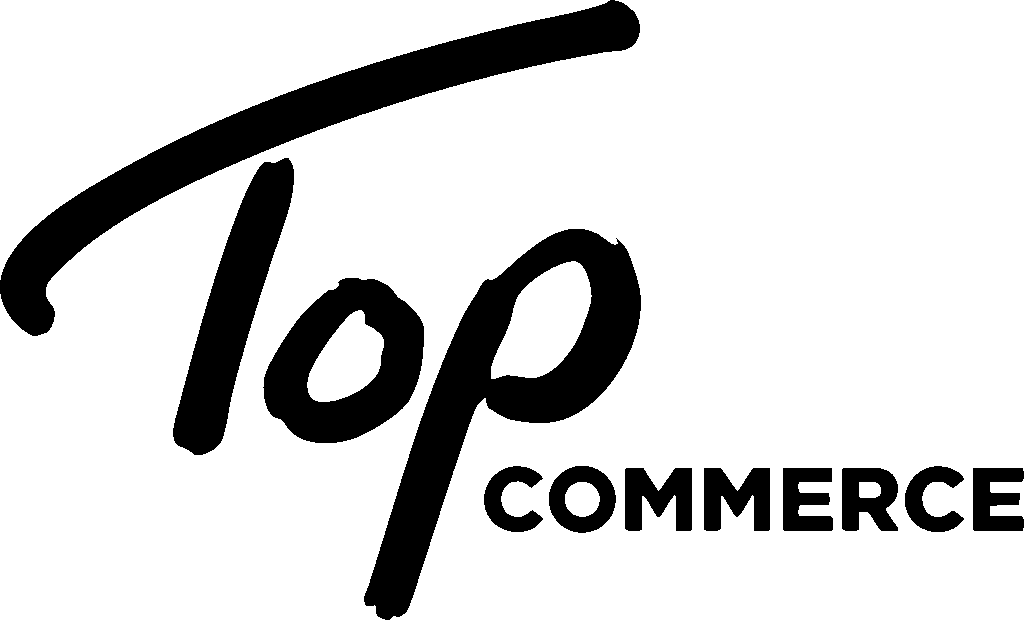Over 2.14 billion people shop online worldwide, your customers are out there!
How to Start an Ecommerce Business (Step-by-Step Guide for Beginners)

Many of the products and services we use daily, come from ecommerce businesses. And every ecommerce business (no matter the size) has had it’s first step. If you’re reading this, you are going to take that first step. So Congrats!
Starting an ecommerce business can be exciting, rewarding, and yes, a bit overwhelming. But don’t worry. You’re not alone. This guide breaks down everything into simple, actionable steps. Whether you’re selling handmade crafts or dropshipping tech gadgets, your journey begins here. Let’s learn how to start an ecommerce business and turn your idea into a thriving online store!
What Is an Ecommerce Business?
An ecommerce business (electronic commerce) is any business that sells goods or services “over te internet”. If you’ve ever ordered a book from your favorite online shop, booked a class through a website, or grabbed a new phone case off Amazon,you’ve experienced ecommerce in action. For anyone wondering how to start an online business step by step, it all begins here: with the simple idea of selling something online. But the way you do that can vary, depending on your model. Ecommerce businesses are mainly in one of these categories:
- B2C (Business to Consumer): This is the most common model. Examples include clothing brands, beauty products, or home decor sold directly to customers through an online store.
- D2C (Direct to Consumer): Similar to B2C, but the brand manufactures its own products and skips the middleman. Great for niche makers and creative entrepreneurs.
- B2B (Business to Business): These ecommerce businesses sell to other companies, like bulk suppliers, SaaS tools, or office equipment providers.
- C2C (Consumer to Consumer): Peer-to-peer selling, like on eBay, Poshmark, or Facebook Marketplace. Individuals sell directly to other individuals.
When you’re looking to start an ecommerce business, you’ll often choose between building your own online store or selling on a larger marketplace (like Etsy, Amazon, or eBay). Each has its pros and cons and features.
| Feature | Online Store | Marketplace |
| Control & Branding | Full control over design, branding, and experience | Limited control; must follow platform’s guidelines |
| Startup Cost | May include hosting, domain, and platform fees | Often lower upfront cost, but includes listing/selling fees |
| Customer Relationship | You own the customer relationship and data | Platform owns customer data; limited direct contact |
| Trust & Traffic | You build your own traffic and credibility | Built-in trust and existing traffic from the platform |
| Fees & Profit Margins | Fewer ongoing fees; higher profit potential | Transaction, listing, and referral fees may add up |
| Marketing Required? | Yes — you’ll drive your own traffic (SEO, ads, email) | Less marketing needed upfront, but more competition |
| Scalability | Highly scalable, especially long term | Easier to start, harder to scale without a store |
| Best For | Long-term brand building and full control | Testing products, side income, or beginner sellers |
Hear This Out!

Over 2.14 billion people shop online worldwide, your customers are out there. Start small, stay consistent, and grow one order at a time.

Hear This Out!


Why Start an Ecommerce Business in 2025?
If you’ve been thinking about starting an online business, 2025 is the perfect time to make your move. The tools are more accessible, the audience is bigger than ever, and your future customers are already shopping online.
Ecommerce isn’t slowing down. Global ecommerce sales are expected to surpass $7 trillion in 2025, with more people choosing the convenience of online shopping over brick-and-mortar stores. Whether it’s groceries, fashion, or digital products, consumers now expect to buy almost everything online.
Plus, the barrier to entry is low. Compared to traditional retail, starting an ecommerce business requires minimal upfront investment. You don’t need to rent a storefront, hire staff, or keep massive inventory. With the right platform and a solid plan, you can launch from your laptop.

Step-by-Step: How to Start an Ecommerce Business from Scratch
You can start ecommerce business in many platforms, each with its own features and tools that make selling smoother for people in their early stages of work. In whatever platform (Shopify, Amazon, Etsy, etc) here’s the main steps you need to take.
1. Find a Product to Sell
First of all, you’ll need to find a concept: a desirable, profitable product (or service). Something that’s meaningful and valuable to you, or a good sell (or at its best: both). Looking for inspiration? Hot niches this year include health & wellness, home essentials, sustainable products, fashion accessories, pet care, and tech gadgets. Shoppers are craving comfort, convenience, and conscious choices, making these categories perfect for new ecommerce sellers. Not sure where to begin? Tools like Google Trends, Exploding Topics, or TikTok’s Creative Center can help you spot what’s hot.

2. Research Competitors and Validate Demand
Before you dive in, take time to understand the market. Search your product idea on Google, Amazon, or Etsy, what are others selling? What are customers loving (or complaining about)? This gives you insight into pricing, features, and gaps you can fill.
Use tools like Jungle Scout, Ubersuggest, and Google Trends to explore demand, keyword volume, and trending interest. This is a key part of building an ecommerce business step by step, you want to know there’s real interest before you invest. Smart validation now saves time and money later.
3. Know Your Target Audience
Understanding who you’re selling to is just as important as what you’re selling. Create simple customer personas, think about their age, lifestyle, habits, challenges, and goals. What do they care about? What problems are they trying to solve?
Explore Facebook groups, Reddit threads, and product reviews to hear their real words and frustrations. These insights will help you shape better messaging, product features, and marketing. When building an ecommerce business step by step, empathy is your superpower. Sell to someone -not just anyone- your business will grow with purpose and clarity.
4. Choose a Business Name and Domain
Your business name sets the tone for your brand, so make it memorable, simple, and easy to spell. Brainstorm words that reflect your product, values, or vibe. Think about how it sounds aloud and how it might look on a logo or social media handle. Check domain availability using tools like Namecheap or Shopify’s Business Name Generator. Try to grab the .com version if you can!
5. Write a Business Plan
You don’t need a 50-page document, but a clear business plan helps turn your idea into action. Outline your executive summary, product offering, market research, and basic logistics, like how you’ll source, store, and ship products. This step brings clarity and confidence, especially if you’re learning how to start ecommerce business for beginners. It also helps if you plan to seek funding later on.
6. Choose Your Ecommerce Platform
Here are the main platforms you can use to kick-start your ecommerce business:
Shopify
Shopify is like the Swiss Army knife of ecommerce: powerful, sleek, and made for sellers. It’s great if you want to grow fast without worrying about tech headaches. Perfect for turning side hustles into full-blown businesses.
Wix
Wix is super beginner-friendly, especially if design matters to you. It’s ideal for creatives or service-based sellers who want a beautiful, simple storefront with less focus on deep ecommerce features. Great for getting online quickly and easily.
![]() WooCommerce
WooCommerce
WooCommerce gives you full control. it’s open-source, flexible, and perfect for WordPress users. If you love tinkering or want something ultra-custom, this is your playground. Just be ready to handle hosting and a bit of setup work.
BigCommerce
BigCommerce is built for growth. It offers advanced features like multi-channel selling and built-in SEO tools without relying on tons of apps. A solid choice for scaling brands or businesses with bigger product catalogs.
![]() Amazon
Amazon
Selling on Amazon is like setting up shop in a busy mall, you’ll get traffic, but you’ll also face competition. It’s a great way to validate products or reach customers quickly, especially if you’re new to ecommerce.
With 20% of global retail sales are online, it’s your turn Now:
1. Pick a product
2.Build your store
3.Start selling

20% of global retail sales are online, it’s your turn:
1. Pick a product
2.Build your store
3.Start selling

7. Build Your Online Store
Now the fun begins! Bringing your store to life! Start by choosing a theme or template that fits your brand’s style. Most platforms (like Shopify or Wix) offer drag-and-drop builders, so no coding needed.
Add your products with clear photos, compelling descriptions, and pricing that reflects your value. Next, set up payment methods, Stripe, PayPal, or even Buy Now, Pay Later (BNPL) options. Don’t forget to customize basics like your logo, colors, and navigation. This is your digital storefront. Make it inviting and easy to use.
8. Set Up Shipping, Taxes & Legal Stuff
Before you start selling, make it official. Register your business name and choose a legal structure: LLC, sole proprietorship, or something else, depending on your goals. This protects you legally and helps with things like taxes and payment processing. Check your local regulations or use tools like LegalZoom to simplify the process.
Next, set up shipping. If you’re using Shopify, explore their built-in shipping profiles to customize rates by product, location, or method. You can also connect fulfillment tools like ShipStation or Printful to automate deliveries. Clear shipping = happy customers, and happy customers come back.
9. Launch Your Store
You’re almost there. time to go live! Before opening the digital doors, run a few test purchases to make sure everything works smoothly, from checkout to confirmation emails. Don’t forget to check your store on mobile devices, most shoppers browse on their phones, so make sure it looks great and loads fast.
Once it’s all set, announce your launch with a bang. Send an email to friends, family, or your waitlist. Share your story on Instagram, TikTok, or wherever your audience hangs out. You don’t need a huge crowd, just a real one who’s excited to cheer you on.
10. Drive Traffic & Get Your First Sales
With your store live, it’s time to bring in visitors and turn them into customers. Start with organic social media (Instagram, TikTok, Pinterest) and basic SEO to get found in search. Share your story, show your products in action, and engage with your niche community.
Once you’ve tested the waters, consider running Meta (Facebook/Instagram) or Google Ads to scale faster. And don’t overlook marketplaces like Amazon or Etsy—they can help drive early traffic while your brand grows.
This stage is key in learning how to start an online business step by step. Consistency and creativity are what turn browsers into buyers.
Best Ecommerce Platforms to Start With
Platforms are here to make ecommerce easier for you, and you must choose visely here. Select the one that is best for you and where you stand in the business journey.
| Platform | Pros | Cons | Best For |
| Shopify | Easy to use, all-in-one, great support, app ecosystem | Monthly fee, limited free themes | Beginners to pros building a standalone store |
| Wix | Drag-and-drop builder, affordable, good templates | Less scalable, limited features for large stores | Small stores or solo creators |
| WooCommerce | Fully customizable, free plugin for WordPress, flexible | Requires hosting, technical setup | Bloggers, dev-savvy sellers |
| BigCommerce | Built-in SEO features, scalable, no transaction fees | Steeper learning curve, fewer themes | Growing businesses, enterprise-level stores |
| Amazon | Huge built-in audience, fast setup, trusted platform | High competition, seller fees, no branding control | Product resellers or new sellers testing demand |
Common Mistakes to Avoid When Starting an Ecommerce Business
Every new seller makes a few missteps, but knowing what to watch for can save you time and money. Try to avoid these at all costs:
- Trying to sell everything
Selecting a niche is one of the first and most important steps. Starting too broad can confuse customers and drain your energy. Focus on one niche or product category to build trust, simplify operations, and market more effectively from the start. - Not researching the market
Skipping research means guessing what people want. Study competitors, customer reviews, and trends to validate demand. Don’t leave anything to guessing. Knowing your market helps you create offers that truly resonate. - Skipping legal setup
It’s tempting to dive in, but skipping business registration or choosing the wrong legal structure can cause issues later. Protect yourself early with the right setup for taxes, payments, and peace of mind. - Underestimating marketing budget
You might build a beautiful store, but without traffic, it won’t sell. Allocate a realistic budget for ads, content, and tools. Marketing isn’t optional,it’s what brings your brand to life. - Not optimizing for mobile
More than half of online shopping happens on mobile. If your site’s slow, clunky, or unreadable on phones, you’ll lose customers fast. Test it thoroughly and design with mobile first in mind.
Tools to Help You Launch Faster
Manually setting up an ecommerce site is totally doable, but why do that when there are tools to smooth things out and make your work 10 times faster? These tools are the best ones for ecommerce beginners because they can increase sales, automate marketing, etc
Website & Store Builders
Choose a no-code builder that’s intuitive and mobile-friendly. Look for easy customization, templates you can tweak, and features that simplify setup, so you can focus on selling, not coding.
Branding & Visuals
Use simple tools to design your logo, edit product photos, and build a consistent brand look. Cohesive visuals help your store feel polished, professional, and trustworthy from day one.
Product & Inventory Management
Good tools make it easy to add products, track inventory, and manage fulfillment. Staying organized behind the scenes means fewer mistakes, and a smoother experience for your customers.
Marketing & Automation
Automate your emails, schedule social posts, and recover abandoned carts with ease. These tools help you stay visible, nurture customers, and boost sales without being online 24/7.
Conversion & Sales Tools
Use smart features like popups, product bundles, and upsell prompts to guide shoppers toward checkout. These subtle nudges can improve conversions without feeling pushy or overwhelming.
Analytics & Reporting
Even as a beginner, tracking traffic and sales helps you understand what’s working. Data-backed decisions save time, reveal trends, and help you grow your ecommerce business with confidence.
Business Planning Tools
Name generators, domain checkers, and simple planning templates help you lay the groundwork. These tools make the early steps easier, and give your business a clear, professional starting point.
Final Thoughts: Ready to Launch Your Ecommerce Business?
You’ve just taken a big step toward building something of your own. Now it’s time to put it all into motion. Start by choosing the right platform: whether it’s Shopify, Wix, or WooCommerce, pick the one that fits your goals and comfort level. Then, build your store with care: add great product photos, write clear descriptions, and make sure it looks great on mobile. Finally, start promoting. Share your story on social media, launch an email list, and explore paid ads when you’re ready.
Remember, no one launches a perfect store. But by taking action, learning as you go, and staying connected to your customers, you’ll build something real. Your ecommerce journey starts now. Let’s go.
FAQ
How much money do I need to start an ecommerce business?
You can start with $100–$500, depending on your platform, product sourcing, and marketing approach.
Is ecommerce still profitable in 2025?
Yes, ecommerce continues to grow, with strong demand, niche opportunities, and low startup costs making it very profitable.
Can I start an ecommerce business without inventory?
Yes, you can use dropshipping or print-on-demand models to sell products without holding inventory yourself.
What is the easiest ecommerce platform for beginners?
Shopify is beginner-friendly with simple setup, built-in tools, and great support—perfect for launching your first store.


